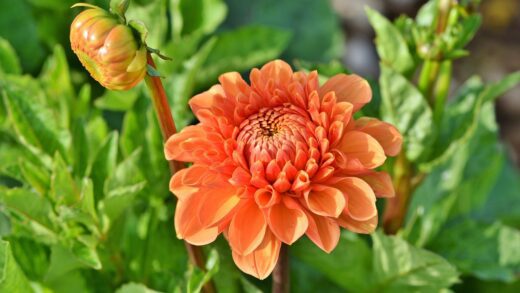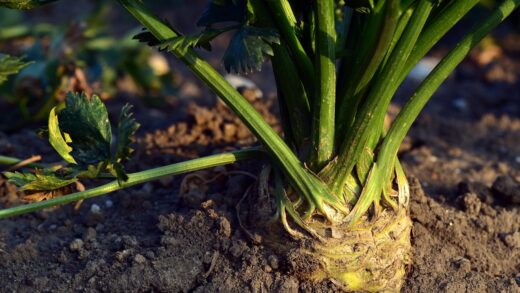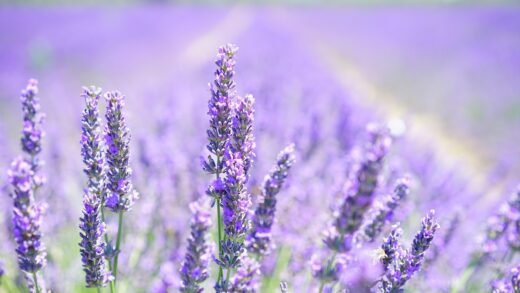The Manchu rose, known scientifically as Rosa xanthina, is a stunning shrub native to northern China and Korea, and it can be one of the earliest blooming and most spectacular ornaments of the spring garden. Its vibrant yellow, almost luminous flowers appear when most other rose varieties are just awakening from their winter slumber, providing an unparalleled splash of colour on the early-season palette. Its special value lies not only in its early and abundant flowering but also in its extraordinary hardiness and resistance to diseases, making it an ideal choice for both experienced gardeners and beginners alike. This species has deservedly earned the admiration of garden enthusiasts, as its natural charm and the relative simplicity of its care form a unique combination.
Regarding its botanical characteristics, the Manchu rose is a medium to large deciduous shrub with an upright, then gracefully arching branch system, which can reach a height and width of two to three metres in its mature state. Its leaves are odd-pinnately compound, lending the plant a fine, almost fern-like texture that makes it decorative even before and after flowering. The real spectacle, however, is the mass of single or semi-double, brilliant golden-yellow flowers, typically 5-6 centimetres in diameter, that open in late April or early May, covering the entire bush. Following the flowers, small, round, dark red or blackish hips develop, which have further ornamental value and also serve as food for birds.
In garden design, the Manchu rose can be used versatilely thanks to its characterful appearance. It excels as a specimen plant, i.e., planted alone, where its elegant, arching branch structure and mass of flowers can be displayed in their full glory on a well-kept lawn or in a prominent bed. Additionally, it fits perfectly into the background of mixed shrub or perennial borders, where its spring bloom sets the stage for later displays. It can also be planted as a loose, unpruned hedge, forming a natural boundary between different parts of the garden, while its thorny branches also serve a protective function.
From an ecological and historical perspective, it is a significant plant that contributes to the biodiversity of the garden. Through its early flowering, it provides a valuable source of nectar and pollen for awakening pollinators, especially bees, during a period when few other flowers are available. As a species rose, it has preserved the natural, clean beauty and vitality that is often lacking in modern, over-hybridized varieties. The Manchu rose was introduced to Western horticulture in the early 20th century and played an important role in introducing the yellow colour and extreme hardiness into modern rose cultivars, so its genetic legacy lives on today in the most popular hybrids.
The ideal planting site and soil preparation
Choosing the right location for the Manchu rose is crucial for abundant flowering and healthy development. The plant is sun-loving, so it prefers a sunny, bright part of the garden where it receives at least six to eight hours of direct sunlight daily. Although it can tolerate partial shade, under such conditions, the flower yield may be significantly reduced, and its shoot system will be more elongated and have a looser structure. Ensuring good air circulation is also an important aspect, as it helps the leaves to dry quickly after rain or watering, thereby preventing fungal diseases such as black spot or powdery mildew, even if the variety has good resistance.
In terms of soil, the Manchu rose is not overly picky, but it prefers well-drained, nutrient-rich soil the most. Proper drainage is particularly important, as standing water and a permanently wet medium can lead to root rot, which can cause the plant’s demise. The ideal soil pH is in the neutral to slightly acidic range, between 6.0 and 7.0. If our soil is too clayey and compacted, it is essential to improve its structure by adding sand and organic matter to allow water and air to penetrate more easily.
Thorough soil preparation before planting will be rewarded later and will lay the foundation for the plant’s successful establishment and vigorous growth. When digging the planting hole, do not be stingy with its size; it should be at least twice as wide and deep as the plant’s root ball or container. It is advisable to improve the excavated soil by mixing in generous amounts of mature compost, well-rotted manure, or other high-quality organic matter. This not only increases the soil’s nutrient content but also improves its structure, water-holding capacity, and aeration, creating an optimal medium for the roots.
The most favourable time for the actual planting is in autumn or early spring when the plant is dormant. Carefully remove the rose bush from its container and, if necessary, gently loosen any tangled roots so they can spread out more easily in their new location. Place the plant in the centre of the hole so that the root collar (the point where the roots and the stem meet) is at or slightly above soil level. Backfill the hole with the amended soil, gently firming it around the roots to eliminate air pockets, and then water thoroughly to settle the soil after planting.
Care and pruning of the Manchu rose
Once established, the Manchu rose is quite drought-tolerant, but it is grateful for regular watering, especially during its first year and during long, dry spells. It is best to water less frequently but with larger amounts of water, deeply soaking the soil, which encourages the plant to develop a deep, strong root system. Nutrient replenishment should be done in early spring at the beginning of the growing season with a balanced, slow-release rose fertilizer or a top-dressing of compost around the base. This provides enough energy for shoot growth and abundant flowering, avoiding the weak, disease-prone shoots caused by excessive nutrient intake.
The application of mulching is an extremely useful practice for the Manchu rose as well. A 5-8 centimetre thick layer of organic mulch (such as wood chips, pine bark, or compost) spread around the base of the plant helps to conserve soil moisture, suppress weed growth, and regulate soil temperature, protecting the roots from the summer heat and winter frosts. It is important not to spread the mulch directly against the rose’s stem; leave a small gap to allow air to circulate freely, preventing bark rot. The organic mulch will break down over time, further improving the soil’s structure and nutrient content.
Pruning is one of the most important care operations, and its correct timing and method fundamentally influence the extent of flowering. The Manchu rose, like most spring-flowering shrubs, produces its flowers on the previous year’s wood, i.e., on old woody parts, so spring pruning would mean removing the flower buds. The main pruning tasks should always be carried out immediately after flowering has finished, in late spring or early summer. This gives the plant enough time to develop new shoots during the summer, on which the flowers will appear the following spring.
The goal of pruning is to preserve the plant’s natural, gracefully arching shape, to keep the bush airy, and to encourage continuous renewal. As a first step, always remove all dead, damaged, diseased, or inwardly growing, crossing branches. Then, to rejuvenate the bush, cut out some of the oldest, thickest canes that produce fewer flowers (usually a quarter or a fifth of the canes) at the base. Finally, the remaining healthy canes can be slightly shortened as needed to maintain the harmonious size and shape of the bush, but drastic cutting back should be avoided.
Effective methods of propagation
There are several proven methods for propagating the Manchu rose, which allow you to create new plants from a beloved specimen already in your garden. The most commonly used and likely to be successful methods under home garden conditions are hardwood, semi-hardwood, and softwood cuttings, as well as seed sowing, although the latter is much more time-consuming. Each of these techniques requires different timing and slightly different conditions, but with proper attention, anyone can succeed and perpetuate the beauty of this wonderful rose. Vegetative propagation methods, such as cuttings, guarantee that the new plant will be genetically identical to the mother plant.
Softwood or semi-hardwood cutting is the most popular method, which can be done in late spring or early summer during the active growing season, when the new shoots are strong enough but have not yet fully lignified. Select a healthy, non-flowering shoot and cut a piece of about 10-15 centimetres from it, just below a leaf node. Remove the leaves from the lower part of the cutting, and leave the top few leaves, possibly cutting them in half to reduce transpiration. The cut surface can be dipped in rooting hormone, and then the cutting should be inserted into a pot filled with a loose, moist, sterile medium (such as a mixture of perlite and peat). To ensure high humidity, cover it with a plastic bag and keep it in a bright but not direct sunlit place until it roots.
Hardwood cutting is another effective procedure that can be carried out during the plant’s dormant period, from late autumn to the end of winter. For this, cuttings should be taken from mature, pencil-thick stems from the current year’s growth. Cut 20-25 centimetre long pieces, making sure that the bottom of the cutting ends below a bud and the top ends above a bud. The cuttings can be bundled and stored in a sheltered, sandy bed in the garden until spring, or they can be planted immediately in a deep pot or in a prepared trench in the open ground so that two-thirds of their length is below the soil. Hardwood cuttings root more slowly but require less care than softwood cuttings.
Propagation from seed is a lengthy but exciting process that requires some patience and offers the opportunity to observe genetic variation. Collect the reddish-black rose hips in autumn when they are ripe, then soak them in water to soften the pulp and make it easy to extract the seeds. The clean seeds must then undergo a several-month-long cold treatment, called stratification, to break their dormancy. This can be done by mixing the seeds with moist sand or peat and storing them in a sealed bag in the refrigerator for 2-3 months before sowing them in a seedling tray in spring. It usually takes a few years for plants grown from seed to flower.















